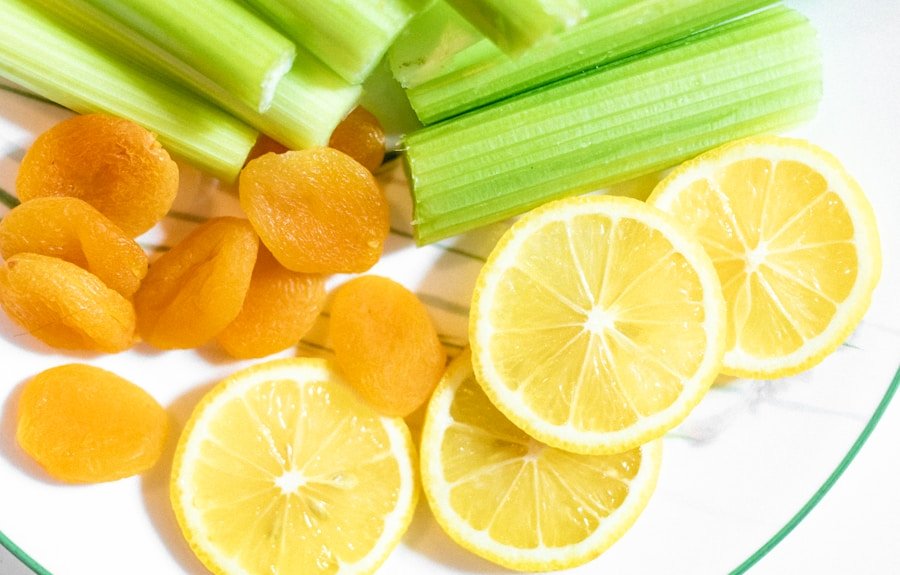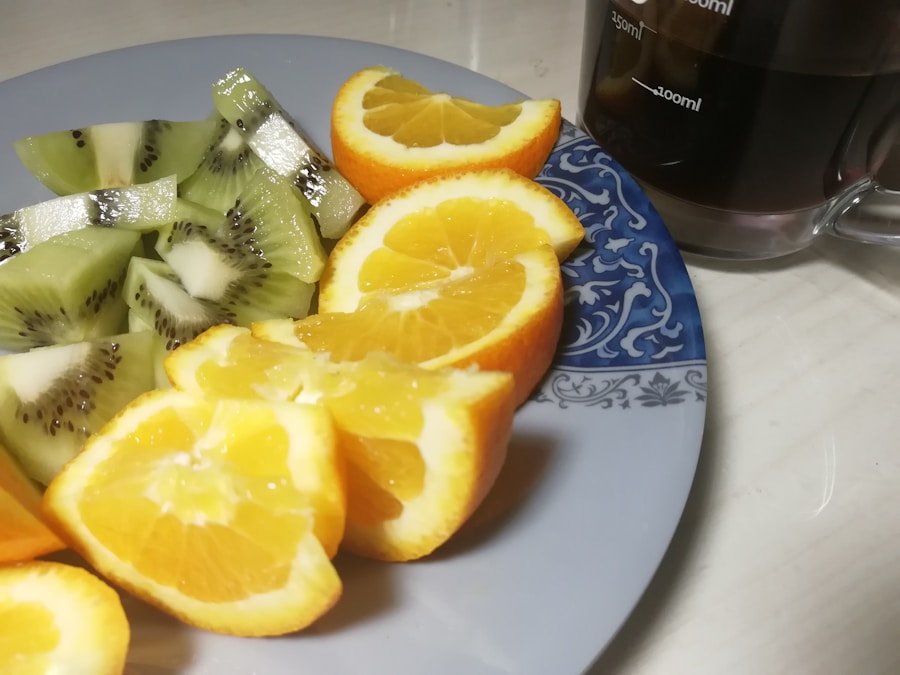Juicing can be a powerful ally in your journey to manage diabetes. It offers a convenient way to consume a variety of nutrients that can support your overall health. When you juice, you extract the liquid from fruits and vegetables, which allows you to enjoy their vitamins, minerals, and antioxidants in a concentrated form.
This can be particularly beneficial for you as a diabetic, as it helps to ensure that you are getting essential nutrients without consuming excessive amounts of carbohydrates. The right juices can provide you with energy and vitality while keeping your blood sugar levels stable. Moreover, juicing can encourage you to incorporate more fruits and vegetables into your diet.
Many people struggle to meet the recommended daily intake of these food groups, but juicing makes it easier and more enjoyable. By experimenting with different combinations, you can discover new flavours and textures that excite your palate. This not only enhances your enjoyment of healthy foods but also helps you develop a more balanced diet, which is crucial for managing diabetes effectively.
Summary
- Juicing can help diabetics manage their blood sugar levels and increase their intake of essential nutrients.
- Choosing the right ingredients, such as leafy greens and low-sugar fruits, is crucial for creating diabetic-friendly juices.
- Try juicing recipes like green apple and spinach or cucumber and celery to help manage blood sugar levels.
- Adding fibre and protein to juicing recipes can help slow down the absorption of sugar and keep blood sugar levels stable.
- Incorporate juicing into a diabetic-friendly diet by balancing it with whole foods and monitoring blood sugar levels closely.
The Importance of Choosing the Right Ingredients for Juicing
When it comes to juicing as a diabetic, the ingredients you choose are paramount. You need to be mindful of the glycaemic index (GI) of the fruits and vegetables you include in your juices. Low-GI foods release glucose slowly into the bloodstream, helping to maintain stable blood sugar levels.
Leafy greens like spinach and kale, as well as non-starchy vegetables such as cucumbers and celery, are excellent choices. These ingredients are low in carbohydrates and high in fibre, making them ideal for your juicing recipes. In addition to low-GI options, consider incorporating ingredients that have been shown to have beneficial effects on blood sugar control.
For instance, adding a small amount of ginger or turmeric can provide anti-inflammatory properties and may help improve insulin sensitivity. Berries, such as blueberries and strawberries, are also great additions due to their high antioxidant content and lower sugar levels compared to other fruits. By carefully selecting your ingredients, you can create juices that not only taste great but also support your health goals.
Delicious Juicing Recipes for Managing Blood Sugar

Creating delicious juices that cater to your dietary needs can be both fun and rewarding. One simple yet effective recipe is a green juice made from spinach, cucumber, celery, and a splash of lemon juice. This refreshing drink is hydrating and packed with nutrients while remaining low in carbohydrates.
The cucumber adds a crisp texture, while the lemon provides a zesty kick that enhances the overall flavour. Another delightful option is a berry blend that combines blueberries, strawberries, and a handful of kale. This juice is not only vibrant in colour but also rich in antioxidants that can help combat oxidative stress.
You can sweeten it naturally with a touch of stevia or a small piece of apple if desired. The combination of berries and greens creates a balanced drink that satisfies your sweet tooth without causing spikes in blood sugar levels.
Incorporating Fibre and Protein into Juicing Recipes for Diabetics
| Recipe | Fibre Content (g) | Protein Content (g) |
|---|---|---|
| Green Juice | 5 | 2 |
| Carrot and Ginger Juice | 3 | 1 |
| Beetroot and Berry Juice | 4 | 3 |
While juicing primarily focuses on extracting liquid from fruits and vegetables, it’s essential to consider the role of fibre and protein in your diet as well. Fibre helps slow down the absorption of sugar into your bloodstream, which is particularly important for managing diabetes. To boost the fibre content of your juices, consider adding ingredients like chia seeds or flaxseeds.
These seeds not only provide fibre but also healthy omega-3 fatty acids that can support heart health. Incorporating protein into your juicing routine can also be beneficial. You might add a scoop of protein powder or include ingredients like Greek yoghurt or nut butter in your recipes.
For example, a smoothie-style juice made with spinach, avocado, almond milk, and a scoop of protein powder can create a satisfying drink that keeps you full longer while providing essential nutrients. This combination helps maintain stable blood sugar levels and supports muscle health.
Tips for Incorporating Juicing into a Diabetic-Friendly Diet
Integrating juicing into your diabetic-friendly diet requires some planning and mindfulness. Start by setting aside time each week to prepare your juices in advance. This not only saves time but also ensures that you have healthy options readily available when cravings strike.
You might consider batch juicing or preparing ingredients ahead of time so that you can quickly whip up a nutritious drink whenever you need it. Another helpful tip is to pair your juices with balanced meals or snacks. Juices should complement your overall diet rather than replace whole foods entirely.
For instance, enjoy a green juice alongside a protein-rich snack like nuts or cheese to help stabilise blood sugar levels. This approach allows you to enjoy the benefits of juicing while ensuring that you’re meeting your nutritional needs throughout the day.
Juicing as a Tool for Weight Management and Blood Sugar Control

Juicing can serve as an effective tool for weight management, particularly for those managing diabetes. When you choose low-calorie, nutrient-dense ingredients for your juices, you can create satisfying drinks that help curb hunger without adding excessive calories to your diet. This can be especially beneficial if you’re looking to lose weight or maintain a healthy weight while managing your condition.
Additionally, juicing can aid in blood sugar control by providing essential nutrients without overwhelming your system with sugars and carbohydrates. By focusing on low-GI fruits and vegetables, you can create juices that support stable blood sugar levels while still being enjoyable to drink. This balance is crucial for maintaining energy levels throughout the day and preventing the fatigue often associated with blood sugar fluctuations.
Potential Risks and Considerations for Diabetics when Juicing
While juicing offers numerous benefits, it’s essential to be aware of potential risks and considerations specific to diabetes management. One significant concern is the sugar content in certain fruits; even though they are natural sugars, they can still impact blood glucose levels if consumed in excess. It’s vital to monitor portion sizes and choose lower-sugar fruits when crafting your juices.
Another consideration is the lack of fibre in many juices compared to whole fruits and vegetables. While juicing can provide concentrated nutrients, it often removes much of the fibre that helps regulate blood sugar levels. To mitigate this issue, consider blending instead of juicing or adding back some pulp or fibre-rich ingredients into your drinks.
This way, you can enjoy the benefits of juicing while still reaping the advantages of dietary fibre.
Making Juicing a Part of Your Diabetic Management Plan
Incorporating juicing into your diabetic management plan can be an enjoyable and beneficial experience when done thoughtfully. By understanding the advantages of juicing, selecting the right ingredients, and being mindful of portion sizes, you can create delicious drinks that support your health goals. Remember to balance your juices with whole foods rich in protein and fibre to maintain stable blood sugar levels.
As you embark on this journey, don’t hesitate to experiment with different recipes and combinations until you find what works best for you. Juicing should be a pleasurable addition to your diet rather than a chore. With careful planning and consideration, you can make juicing an integral part of your approach to managing diabetes while enjoying all the flavours and nutrients it has to offer.
